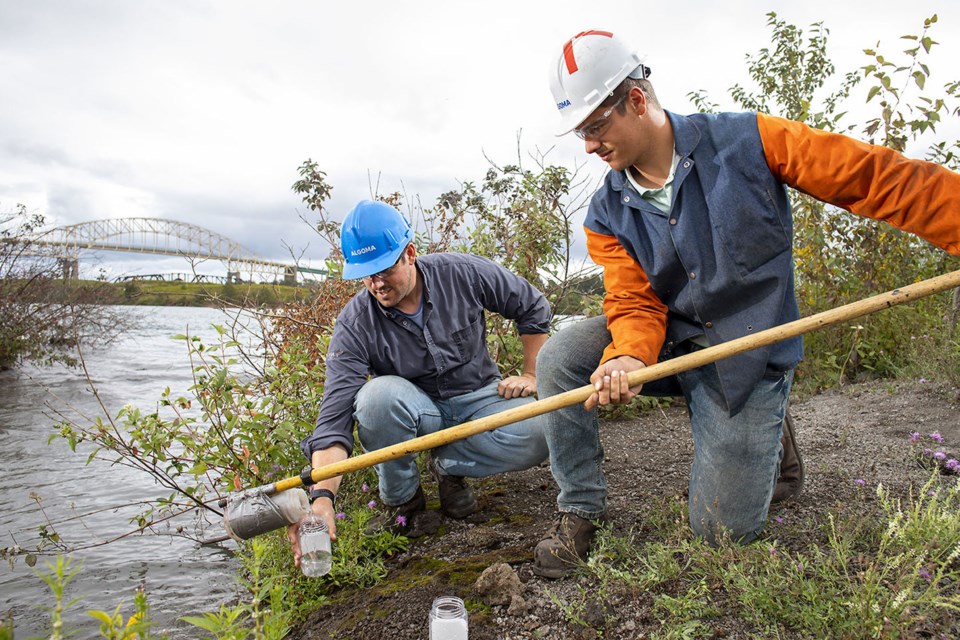There is a lot of excitement about Algoma Steel’s plans to transition to electric arc steelmaking and how this lower-carbon way of making green steel will dramatically shrink the operation’s future environmental footprint. However, there is another lesser-known transformation underway at Algoma Steel that is focused on its historic footprint, as the company looks to build a more sustainable future.
Initiated in 2018, the Legacy Environmental Action Plan, more commonly referred to as LEAP, is an extensive multi-year program – a near $80 million commitment, fully funded by Algoma in the range of $3.5 - $4 million every year, to complete projects to address legacy environmental issues at Algoma’s 1600-acre site concerning the historical environmental impacts to soil, groundwater and sediment regardless of their origin.
While steelmaking has been the primary manufacturing activity on the property, other entities have come and gone over the years, leaving their mark on the land.
One of the key components of the LEAP is to complete a site-wide baseline assessment of the soil, groundwater, surface water, and sediment conditions within the steelworks. This baseline assessment combined with ongoing monitoring expands into risk management and mitigation action plans as the company actively works with the Ministry of Environment, Conservation, and Parks to identify the next steps, prioritize and approve projects.
Since the inception of the LEAP, more than 150 monitoring wells and surface water sampling locations have been installed across the site, focusing on the perimeter of the property, around the iron ore boat slip, and along creeks that run through the site. With the work completed to date, there is no indication that current normal course operations are impacting neighbouring lands and waterways. In parallel, the team took its study to the river bottom with a dredging campaign that saw approximately 4,600 cubic meters of material removed from the boat slip. Preliminary toxicity analyses of the sediment are very encouraging, validating the finding that the historic environmental impacts have been diminishing with many years of remedial efforts in the St. Mary’s River.
Moving above ground, stockpiles of used heavy equipment tires have been recycled, with a one-in-one-out program now in place to prevent future accumulation. Out-of-service coke oven gas mains have been dismantled and recycled and all PCB’s have been removed from the property. Storage tanks that are no longer in use have been emptied and secondary containment measures are being implemented for the remaining tanks.
With an eye to a greener future, Algoma has launched a site greening initiative.
Through collaboration with community partners and experts in the field, a comprehensive plan for soil stabilization, ground and surface water management, and revegetation is taking shape. The plan includes the creation of naturalized green buffer strips along the perimeter of the site by introducing clean soils, creating seasonal surface water ponding areas, and vegetating with select native plants and tree species.
Initial discussion with Sault College’s School of Natural Environment identified an opportunity to be part of the Government of Canada’s commitment to plant 2 billion trees across Canada over ten years. From that discussion a collaboration emerged, marrying Algoma’s intent to green, with the College’s School of Natural Environment’s pledge to participate in the federal program and their ability to supply native trees from their greenhouse.
Working with students from Sault College, Algoma aims to plant thousands of trees on the site, with a view that the new, young trees will help to clean the air as they absorb C02 and produce oxygen. The parties hope that the collaboration will continue for the long term – providing students a chance to monitor the project, which they hope will be a “living lab” for their students.
There will be some dramatic changes at the Baseline Gate by the time the project is done, and from the water, Algoma’s shoreline will be treed and green, providing a buffer for winds and air-borne dust and a scenic vista for Lakers and pleasure craft.
Algoma recognizes that a sustainable future must be built on a solid foundation and our commitment to managing our environmental footprint extends not only to the future but the past. Algoma plans to further engage with the local community as the conceptual design for the larger site-greening plan takes shape.
In the meantime, parties interested in learning more about Algoma Steel’s transition to electric arc steelmaking, are invited to an Environmental Open House on Monday, February 28th from 4:00 pm – 7:30 pm at the Northern Community Centre at 556 Goulais Avenue.
Current details on the Environmental Compliance Approval and Site Specific Standard applications required to govern the transition period based on the planned progressive shutdown of equipment and facilities associated with the transition to electric arc furnace steelmaking will be shared with the community at the Open House.
